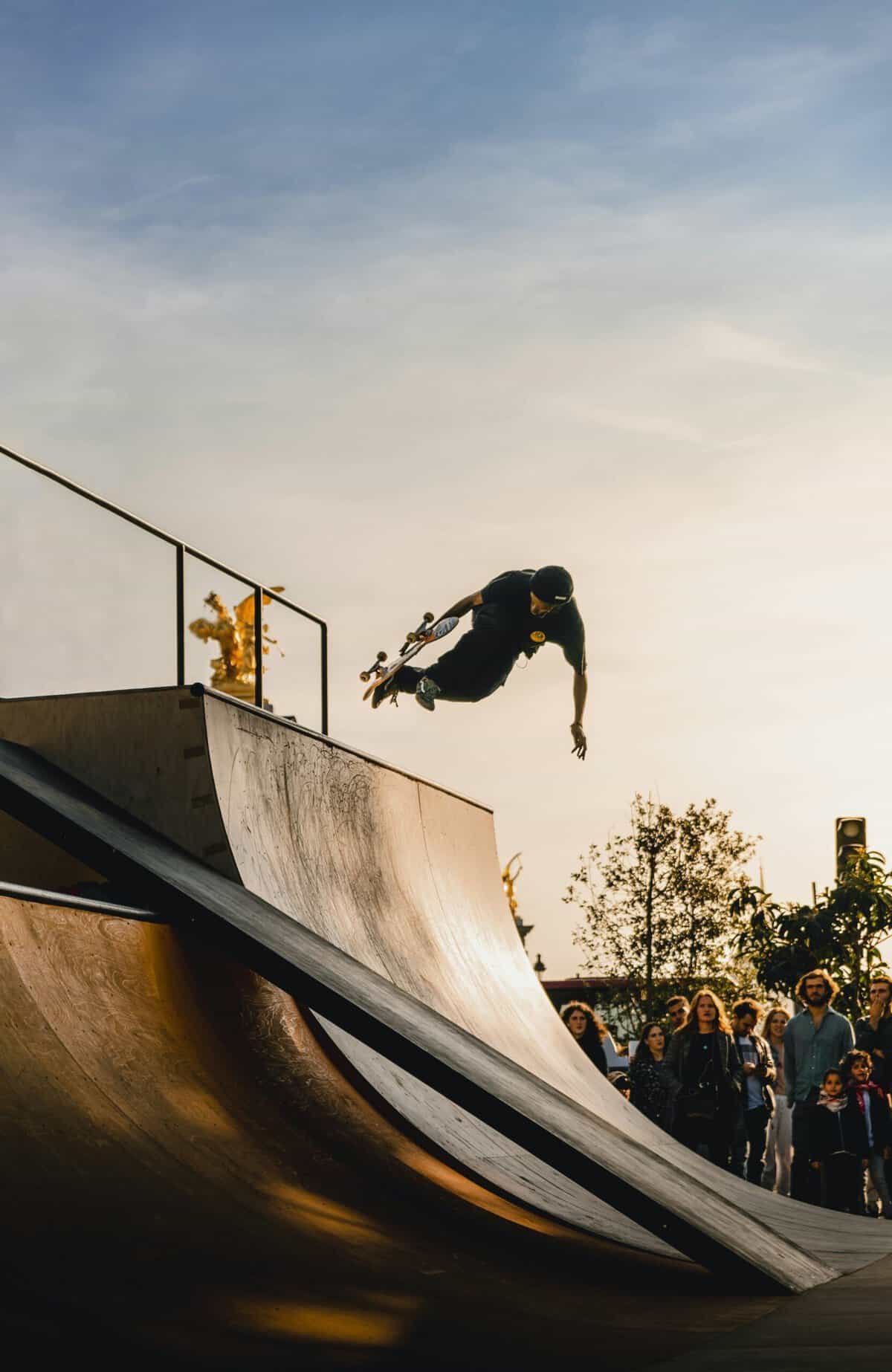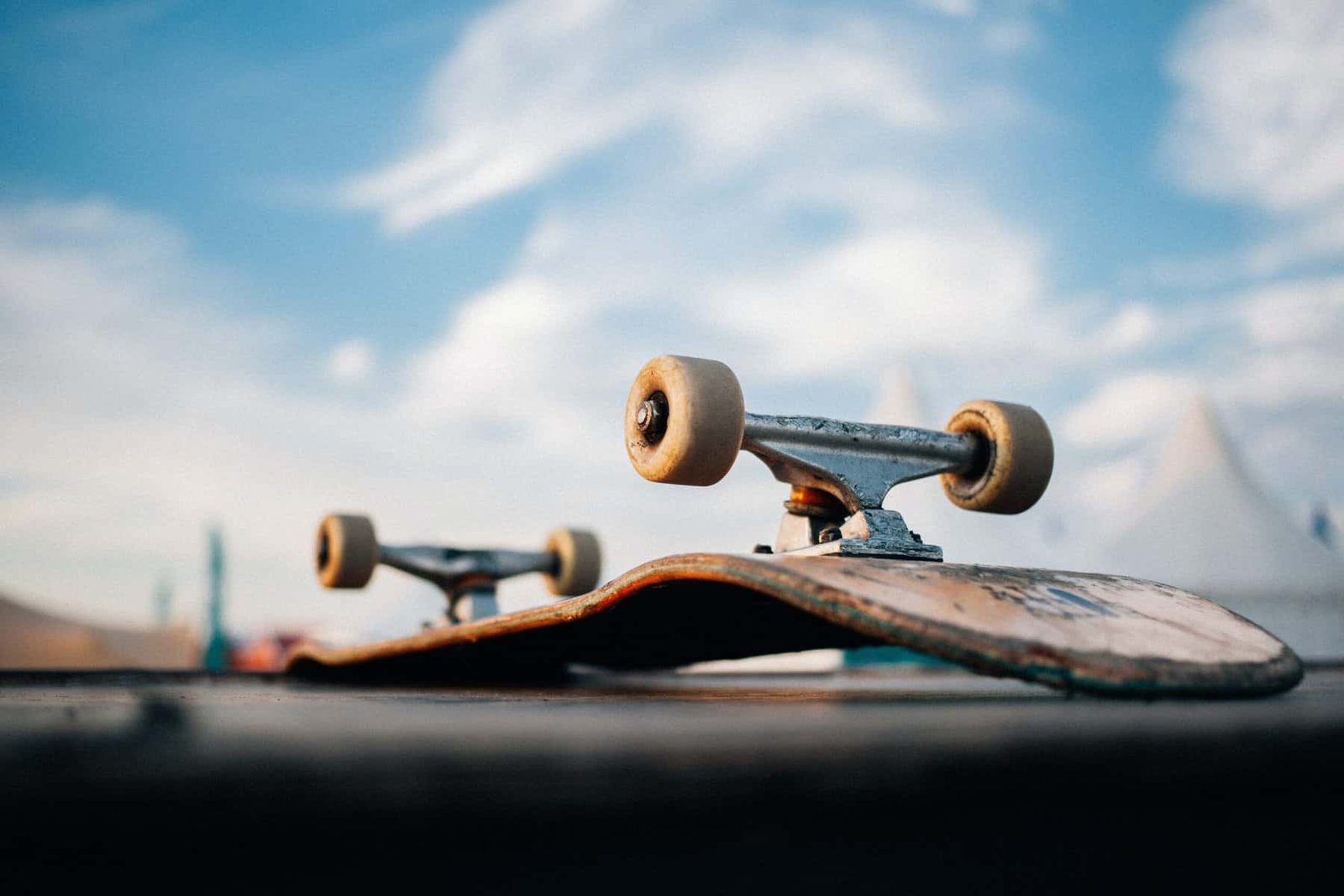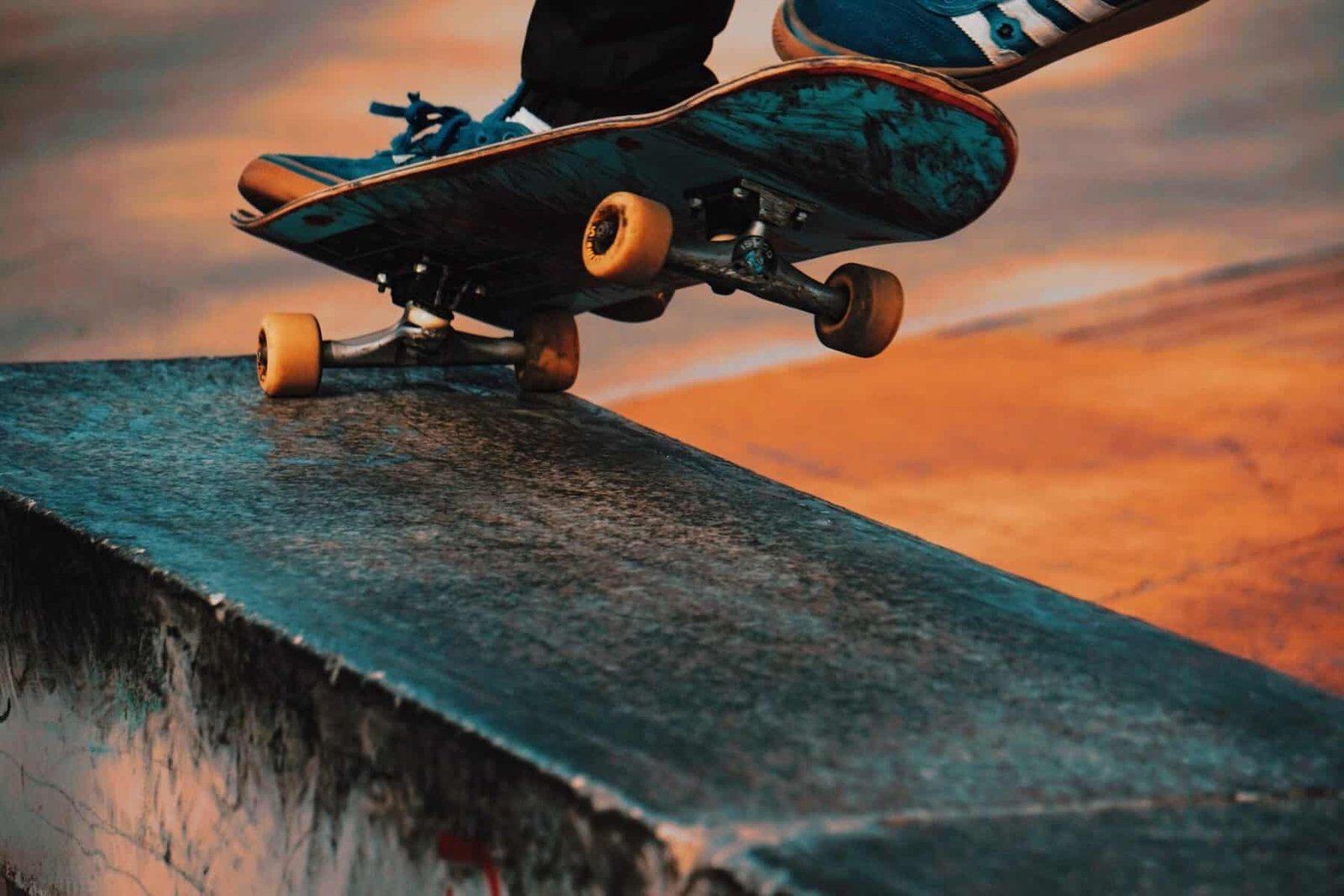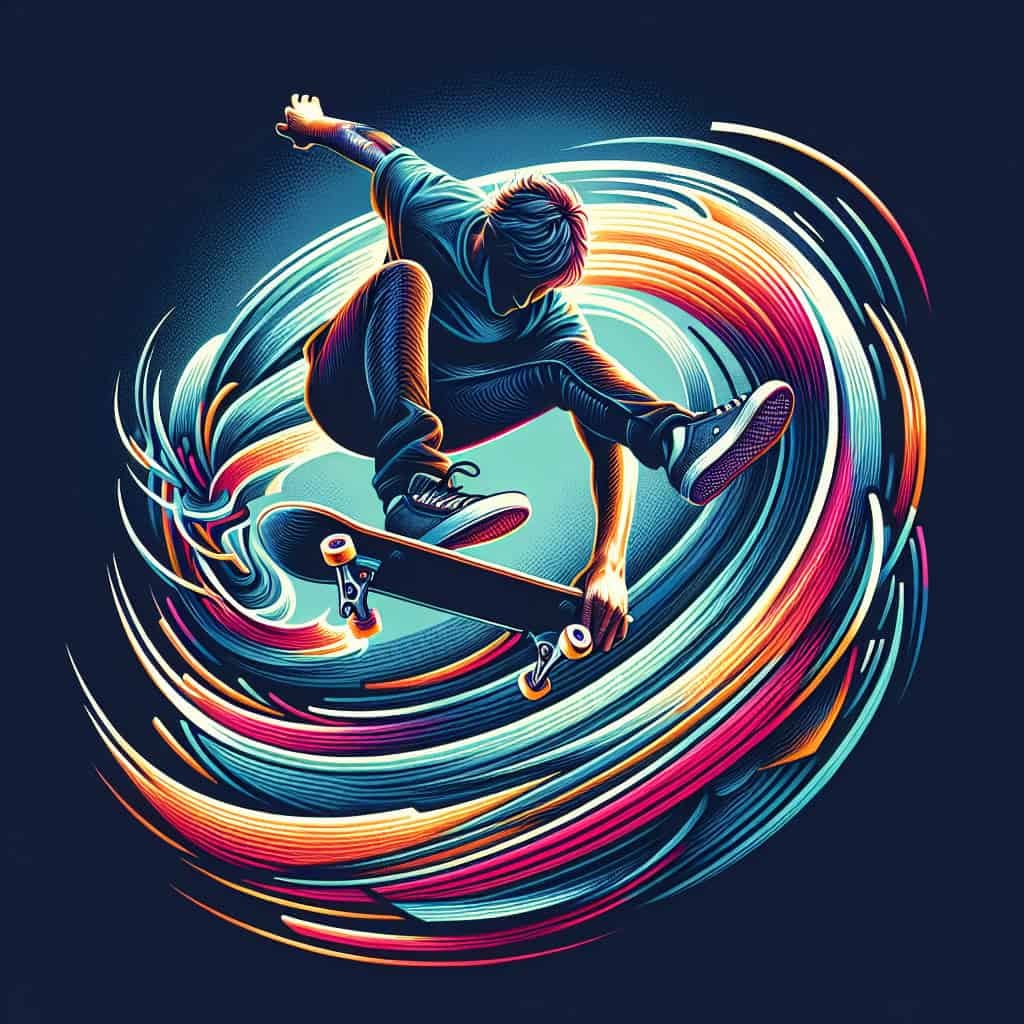So you want to learn how to do skateboard body varials? Well, you’ve come to the right place! It’s an exhilarating trick that will surely impress your friends at the skate park. But don’t worry, mastering this technique doesn’t have to be as daunting as it seems. With a bit of practice, determination, and a friendly push in the right direction, you’ll be nailing those body varials in no time. So grab your skateboard, strap on your helmet, and get ready to soar through the air with style!
Getting Started
Skateboarding is a thrilling and exhilarating sport that allows you to express your creativity and style. If you’re a beginner who’s just starting out, there are a few important things to consider. Let’s kick things off by understanding how to choose the right skateboard and learning about body varials.
Choosing the Right Skateboard
Selecting the right skateboard is crucial to your success and enjoyment in skateboarding. There are several factors to keep in mind when choosing a skateboard:
Deck Size: The size of the skateboard deck is typically measured in width. It’s essential to choose a deck size that suits your body type and skating style. For beginners, a deck width between 7.5″ and 8.25″ is recommended.
Truck Width: The width of the skateboard trucks should match the width of the deck. This ensures stability and proper maneuverability. Make sure the trucks align with the edges of your skateboard deck.
Wheel Hardness: The hardness of the skateboard wheels affects your ride. Softer wheels provide more grip and are suitable for rough surfaces, while harder wheels offer faster speed and smoother slides. For beginners, a hardness rating of 78A to 87A is a good starting point.
Bearings: Bearings are responsible for the smooth rotation of the wheels. Look for bearings with an ABEC rating of 3 or higher. Abec 7 bearings are a popular choice among skateboarders.
Grip Tape: The grip tape on top of the skateboard deck provides traction for your feet. Ensure that the grip tape is applied evenly and securely to the deck.
Taking the time to choose the right skateboard will help you feel comfortable and confident on your board, setting the foundation for successful skateboarding.
Understanding Body Varials
Body varials are a fundamental skateboard trick that involves rotating your body while in mid-air. They add style, flair, and creativity to your skateboarding repertoire. Before attempting body varials, it’s essential to understand the two main types: frontside and backside.
Frontside Body Varial: A frontside body varial involves rotating your body in the direction of your front foot while in mid-air. Imagine spinning your upper body and shoulders towards your nose or front foot. This trick requires coordination and body control.
Backside Body Varial: In contrast, a backside body varial involves rotating your body in the opposite direction, away from your front foot. Picture spinning your upper body and shoulders towards your tail or back foot. This trick also requires coordination and control.
Mastering body varials involves practice, commitment, and a systematic approach. Now that you understand the basics let’s delve into the process of honing your skills.
Mastering Basic Skills
Before attempting body varials, it’s crucial to develop the basic skills that form the foundation of skateboarding. These skills build your balance, coordination, and confidence on the skateboard.

Developing Balance and Coordination
Good balance is the key to executing tricks and maneuvers effectively. To develop your balance and coordination, here are a few exercises you can practice:
Stance: Start by finding your natural stance, whether it’s regular (left foot forward) or goofy (right foot forward). Stand on your skateboard with your feet shoulder-width apart, perpendicular to the length of the deck. Bend your knees slightly and keep your weight centered over the board.
Manuals: Practice doing manuals, which involve balancing on either the front or back wheels. Begin by shifting your weight to the back foot while riding, lifting the front wheels slightly off the ground. As you progress, try balancing on the front wheels.
Tic Tacs: Tic tacs are quick, short turns where you pivot on your back wheels. They help improve your balance and confidence when making sharp directional changes.
By regularly practicing these balance and coordination exercises, you’ll build a solid foundation for successfully executing body varials and other advanced tricks.
Practicing Ollies and Kickflips
Ollies and kickflips are two fundamental skateboarding tricks that are essential for mastering body varials. Here’s a breakdown of how to practice each trick:
Ollies: Ollies are the foundation for many skateboarding tricks. Start by riding at a comfortable speed and bend your knees. Pop your tail on the ground, simultaneously sliding your front foot upwards on the grip tape. This action levels the skateboard in the air. Once airborne, bring your knees up towards your chest to help control the board’s movement. Practice ollies until you can consistently get a good height and control your board’s rotation.
Kickflips: Once you’ve mastered ollies, it’s time to progress to kickflips. Begin by setting up your feet in the ollie position. As you pop the tail, simultaneously flick your front foot diagonally towards the side of the board. This flick motion creates the flip and rotation of the board. Keep your back foot hovering over the tail to guide the board’s rotation. Bend your knees to absorb the landing and maintain control.
By dedicating time and effort to mastering ollies and kickflips, you’ll develop the essential skills needed to execute body varials confidently.
Learning Body Varial Techniques
You’ve built a solid foundation by choosing the right skateboard, understanding body varials, and mastering basic skills. Now, let’s dive deeper into the techniques involved in performing frontside and backside body varials.

Frontside Body Varial
Performing a frontside body varial involves rotating your body in the direction of your front foot. Here’s a step-by-step guide to help you learn the trick:
Find Your Stance: Set up your feet in the riding stance, with your front foot angled towards the nose and your back foot aligned with the tail.
Prepare for Takeoff: Gain some speed and approach the obstacle or area where you’ll attempt the trick. Keep your body low, ready to explode upwards.
Pop and Rotate: As you pop the tail of your skateboard down, imagine spinning your upper body and shoulders in the direction of your front foot. Use your arms and shoulders to initiate the rotation.
Spot the Landing: While in mid-air, keep your eyes focused on the spot where you want to land. This visual reference will help you maintain balance and control throughout the trick.
Extend and Stabilize: Extend your legs and prepare to land smoothly. As you touch down, bend your knees to absorb the impact and regain stability.
With practice, determination, and a focus on body positioning and timing, you’ll be able to execute frontside body varials confidently.
Backside Body Varial
Performing a backside body varial involves rotating your body in the opposite direction, away from your front foot. Follow these steps to learn the backside body varial:
Establish Stance: Set up your feet in the riding stance, with your front foot angled towards the nose and your back foot aligned with the tail.
Generate Momentum: Build up speed and approach the area where you’ll attempt the trick. Keep your body low, preparing to explode upwards.
Pop and Rotate: As you pop the tail down, focus on spinning your upper body and shoulders in the opposite direction of your front foot. Use your arms and shoulders to initiate the rotation.
Maintain Visual Focus: While in mid-air, maintain visual focus on your intended landing spot. This visual reference will aid in maintaining balance and control.
Land Smoothly: Extend your legs to prepare for landing. As you touch down, bend your knees to absorb the impact and recover stability.
Repetition and practice are vital when learning backside body varials. Focus on the rotational movement and timing to achieve consistent and controlled execution.
Perfecting Execution
Now that you’ve learned the techniques for frontside and backside body varials, it’s time to focus on perfecting your execution. There are a few key aspects to pay attention to in order to improve your trick consistency and overall performance.

Committing to the Trick
One crucial factor in mastering body varials is committing fully to the trick. Confidence and conviction are necessary to overcome any fear or hesitation. Visualize yourself successfully completing the trick before attempting it. Trust in your abilities and commit to the rotation, even if it feels uncomfortable at first. The more you commit to the trick, the greater your chances of landing it.
Finding the Right Timing
Timing is everything when it comes to executing body varials effectively. The key is to time your rotation and pop in sync with the skateboard’s movement. Experiment with different timing variations to find what works best for you. Remember, practice makes perfect, and with time, you’ll intuitively develop a sense of timing that works for your body and style.

Avoiding Common Mistakes
It’s essential to be aware of common mistakes that might hinder your progress in mastering body varials. Here are some common mistakes to watch out for:
Lack of Commitment: Fear and hesitation can prevent you from fully committing to the trick. Focus on building confidence and dedicating yourself to the trick’s execution.
Incorrect Body Positioning: Poor body positioning can disrupt your rotation and make landing the trick challenging. Maintain a balanced stance and engage your shoulders and arms to initiate the rotation.
Inadequate Pop: Insufficient pop from the tail can result in low and uncontrolled rotations. Practice and refine your pop technique to generate more height and rotation.
Identifying and rectifying these mistakes will help you progress quickly and consistently in your body varial execution.
Progression and Style
Once you’ve honed your body varial techniques and perfected your execution, it’s time to progress and incorporate your personal style.
Adding Variations to Body Varials
Body varials offer endless possibilities for creativity. Start exploring different variations to add style and uniqueness to your tricks. Experiment with grabbing your skateboard during the rotation and adding spins or flips to your body varials. Let your imagination run wild as you discover new ways to express yourself on your board.

Incorporating Body Varials into Combos
Body varials can be seamlessly integrated into combos, making your skateboarding repertoire more dynamic and impressive. Combine body varials with other tricks like ollies, kickflips, or manuals to create captivating sequences. Practice linking these tricks smoothly to create fluid and visually appealing routines.
Developing Personal Style
Skateboarding is not just about executing tricks; it’s about developing your own unique style. Embrace your individuality and reflect it in your body varial techniques. Pay attention to how you position your body, the fluidity of your movements, and the energy you bring to each trick. Experiment and find what feels natural and comfortable to you. Your personal style is what sets you apart from other skateboarders and allows you to showcase your creativity.
Safety Tips and Precautions
While skateboarding is an exciting and exhilarating sport, it’s essential to prioritize your safety. Here are some key safety tips and precautions to keep in mind:
Wearing Appropriate Protective Gear
Always wear the appropriate protective gear when skateboarding. This includes:
Helmet: Protect your head from potential impact by wearing a well-fitted helmet.
Elbow and Knee Pads: Shield your elbows and knees from scrapes, cuts, or bruises by wearing protective pads.
Wrist Guards: Support and protect your wrists from injuries by wearing wrist guards.
Remember, the gear you wear can greatly reduce the risk of injury and ensure you have a safe and enjoyable skateboarding experience.
Choosing Suitable Skateboarding Surfaces
Selecting appropriate skateboarding surfaces is crucial for your safety. Here are some key factors to consider:
Smooth Pavement: Look for well-maintained paths or skate parks with smooth pavement for optimal riding conditions.
Avoid Traffic: Stay away from busy streets or high-traffic areas to minimize the risk of accidents.
Skate Park Etiquette: If you’re using a skate park, familiarize yourself with the rules and skate park etiquette to ensure a safe and respectful environment for everyone.
By prioritizing safety and making smart choices about the surfaces you skate on, you can reduce the likelihood of accidents or injuries.
Skateboarding is a thrilling and challenging sport that offers endless opportunities for growth and self-expression. With the right skateboard, understanding of body varials, mastering basic skills, and consistent practice, you can become proficient in executing impressive body varial tricks. Remember to always prioritize safety, embrace your personal style, and enjoy the journey of progression in skateboarding. Now, go out there and have a blast pushing your limits and exploring the world of body varials!
